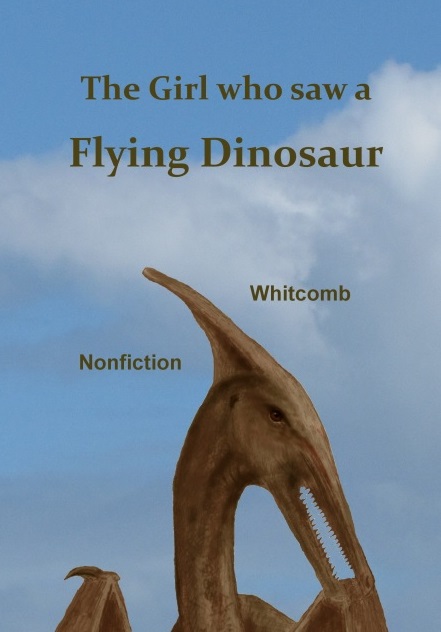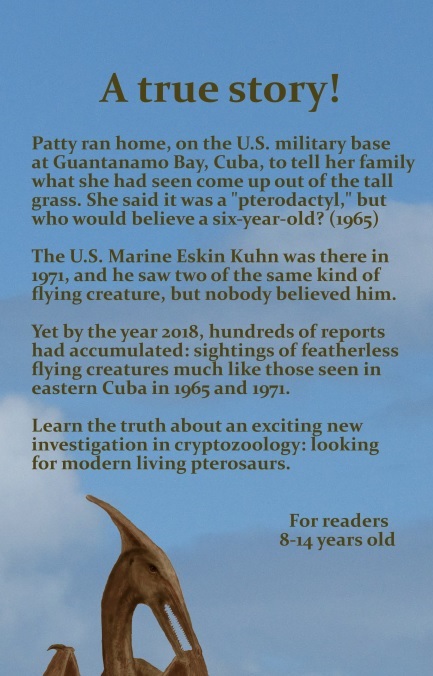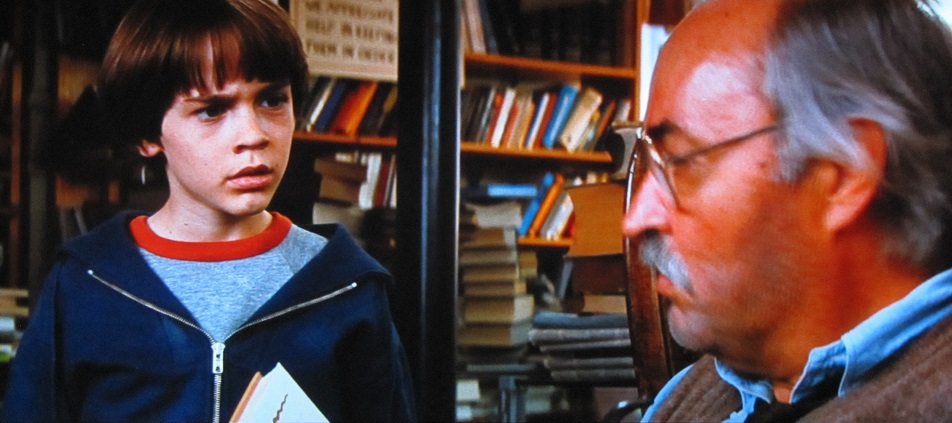By the nonfiction cryptozoology author Jonathan Whitcomb
I’ve already written several posts, on this blog, on my new book The Girl who saw a Flying Dinosaur (GFD). Let’s now compare elements of this nonfiction with what is found in a popular fiction: The Neverending Story. We’ll use the film version (1984) of NS for many comparisons.
For those new to promotions of my new book, “flying dinosaur” refers to a kind of modern pterosaur: the ropen; it’s not about dinosaurs in the scientific use of that word. In addition, some of the eyewitnesses who have contacted me over the past fifteen years have used the word ‘dragon’—nothing close to scientific, but I’ll use it here.
A Young Reader can Find Himself or Herself in the Story
In the make-believe NS, a long story, young Bastian eventually comes to completely believe, while reading the book, that he is part of the never-ending story. This takes a long time for him, and only near the end does he believe to the extent that he is able to be transported into that new world of wonderful life.
In the non-fiction GFD, a short book, the young reader may come to believe in the stories, yet that may be long before the end of the book. This is not likely to be as gripping an adventure for the child or teenaged reader, but he or she can soon become aware of already living in the same world as a yet-to-be-discovered wonderful form of life. That can mean that taking a walk, without reading, can feel like an adventure, for that person who thinks about the wonder of living in the same world as living pterosaurs. The reader is not literally transported but his or her understanding can be positively transformed.
In NS, Bastian appears to be almost the only person in his immediate world who is aware of a new incredible world he is discovering: a world without humans. In GFD, the young reader may actually be the only person in his or her immediate world who is aware of something not yet scientifically discovered: an incredible animal in a world with humans.
.
Near the beginning of The Neverending Story (1984 film)
.
A Fictional Dragon and Real “Dragons”
In The Neverending Story, a boy is carried to safety by a luck dragon that discovers him in a swamp of sadness; the boy is saved from death. In The Girl who saw a Flying Dinosaur, the young reader discovers that one kind of “dragon” has been lucky enough to have escaped the sadness of extinction; that species was somehow saved from death.
The Basics in Comparing the Nonfiction with the Fiction
The Girl who saw a Flying Dinosaur has only 56 pages. The mass-market paperback version of The Neverending Story, if you prefer that to the film, has 448 pages. From my experience, writing GFD and reading the first part of NS, I think that the popular fiction is much more exciting to read, in a story-telling sense, at least for the first 100-200 pages.
But reading my book, for a child or a teenager, can make all of life more exciting, giving the reader a sense of adventure that stays with the young reader long after the reading is over. For all those moments when a kid or teen is not reading, my book will give a lasting benefit, incalculably better than if that young person had read the fiction book instead.
.

Real eyewitness reports of modern pterosaurs (ropens)
###
.
Is this “flying dinosaur” book for you?
Actually, I highly recommend my book that was just published: The Girl who saw a Flying Dinosaur. I just want to be sure that copies of it go to those young readers who want the adventure of approaching this subject with an open mind.
.
1) Simple to read yet stimulating for middle-grade children and teens
2) Explains the benefits of believing someone who has seen something
3) Gives interesting comparisons between accounts, allowing the reader to come to his or her own conclusion about each report
4) Explains the three major interpretations available for a sighting report, allowing the reader to choose one of them . . .
5) Gives the young reader many photos, sketches, and other images, making the book easier to dig into and understand
.
The Girl who saw a Flying Dinosaur
This short non-fiction book, for readers eight to fourteen years old, gives the following benefits . . .
.
This gives the numbers of sightings in many states of the USA, including but not limited to the following:
- California (39)
- Georgia (15)
- Texas (15)
- North Carolina (13)
- and in 36 other states and in Washington D.C.




